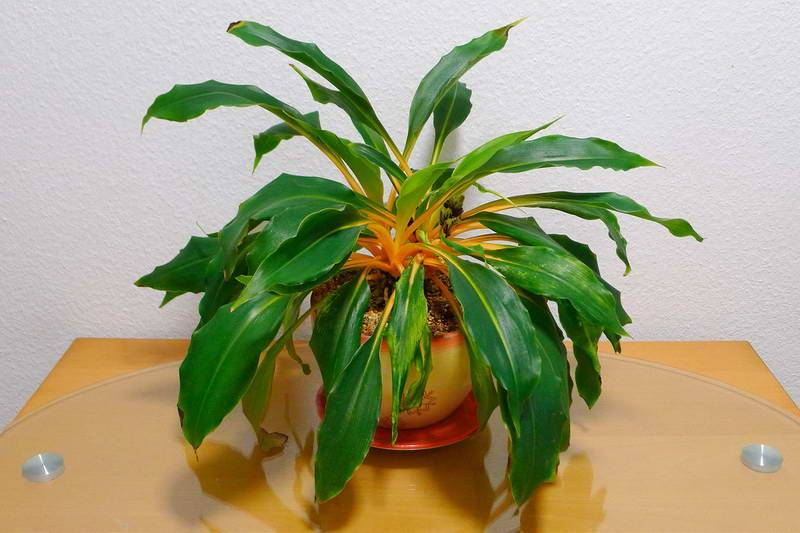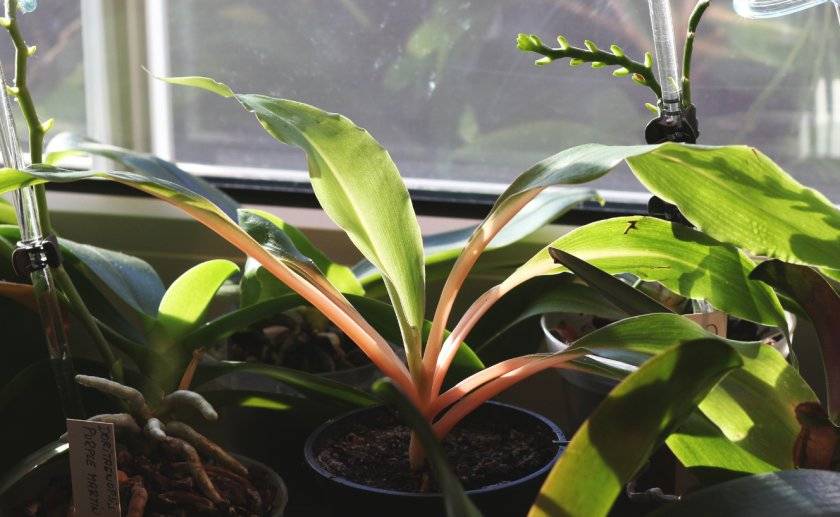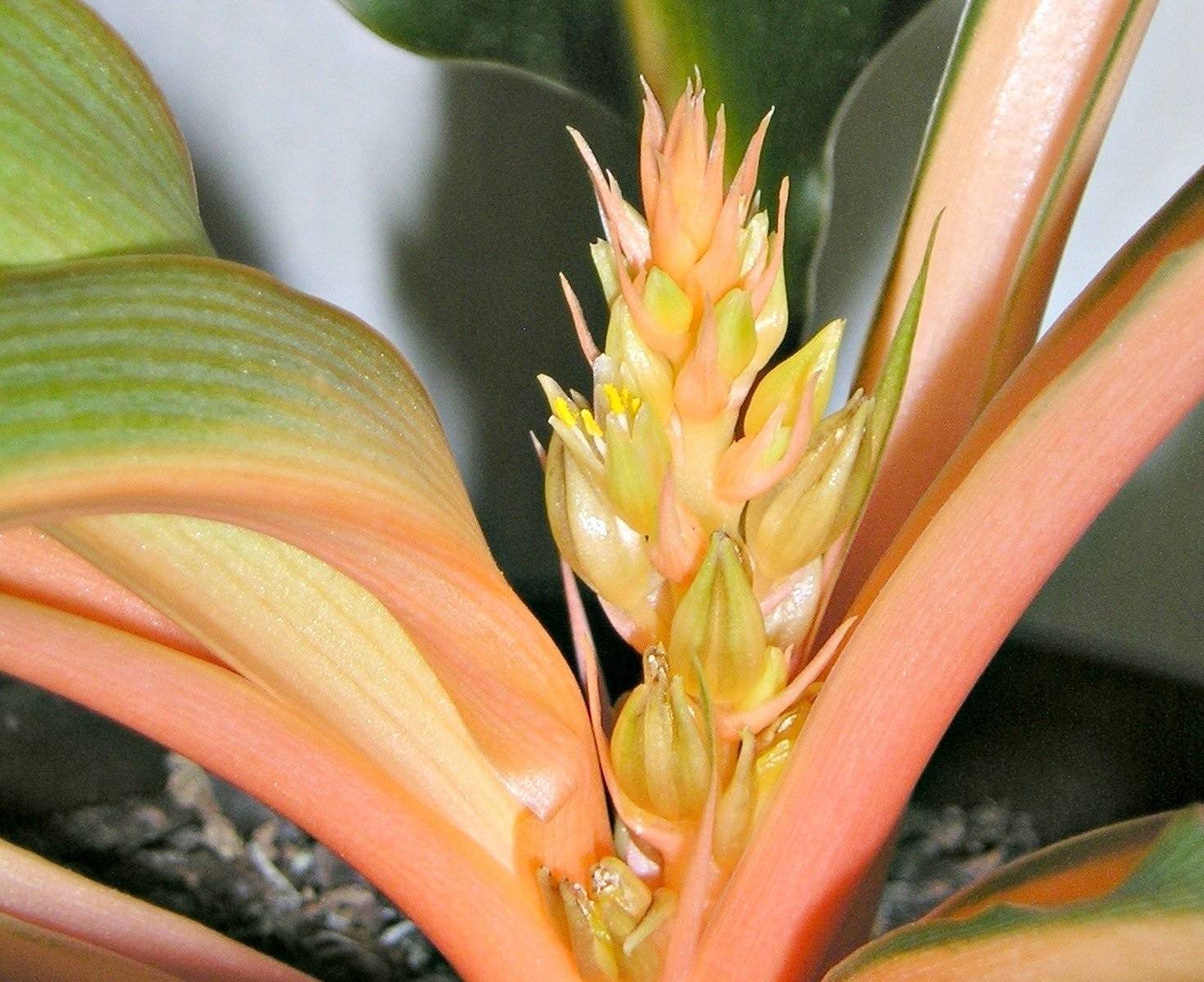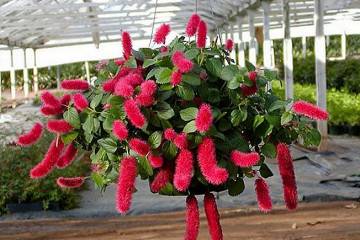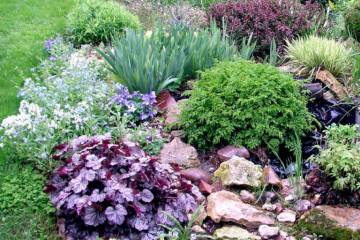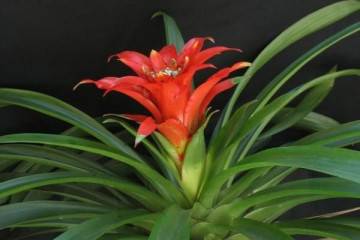Flower chlorophytum orange - description and care
Content:
Chlorophytum orange has other names - winged and orange. The evergreen flower is prized for its beautiful and lush foliage, although it can bloom. The color of the bush is of great interest to flower growers: green leaves smoothly turn into orange at the stems.
What does chlorophytum orange look like?
Chlorophytum Orange (Chlorophytum Orange) differs from representatives of a kind in appearance. The plant has an unusual color of the stem and leaf, belongs to the Liliaceae family. The stems of the bush and the leaves at the bases are orange. The plant itself usually does not grow more than 40 cm in height.
Common varieties
The most common varieties are Green Orange and Fire Flash. Their distinctive feature is the strong contrast of dark green leaves and brightly colored stems. Chlorophytum Green Orange has only an orange stem, in Fire Flash it can be pinkish or brown.
Healing properties
Fleshy large leaf plates tend to absorb toxic substances in the air. Also, the leaves absorb harmful fumes and dust that enters the house through open windows. Many housewives put a flower pot in the kitchen so that the plant absorbs the gas released.
Briefly about the history of appearance
The native land of the plant is the tropical forests of the eastern territories of the African continent. It is noteworthy that in the wild, the plant can grow on the bark of trees. In the 19th century. was introduced to Europe, where it quickly gained popularity in indoor floriculture. He received special love in Holland, where the flower was nicknamed the "Flying Dutchman".
Features of caring for a flower at home
There are no special rules in caring for chlorophytum orange at home, so even amateur flower growers can cope with this.
Temperature
The plant is thermophilic, therefore it does not tolerate a drop in temperature. In summer, the temperature regime should be within 20 ° С, in winter - at least 15 ° С.
Lighting
The plant needs abundant lighting, then the foliage will be more lush and rich green. However, during hot and sunny summer periods, it is worth moving the pot away from windows during the day.
Watering
The moisture-loving chlorophytum plant requires abundant and regular watering. In the summer, the frequency of watering should be increased. After each watering, it is recommended to loosen the soil so that the water in the ground does not stagnate.
Spraying
Spraying is carried out half as often as watering. The plant is sprayed with clean water without impurities from a spray bottle. The procedure helps to increase moisture and get rid of accumulated dust and dirt.
Humidity
Tropical winged chlorophytum needs high humidity levels, the level should not drop below 75%. On very dry and hot days, the bushes are sprayed several times a day.
Priming
The soil should be loose and moist. For additional looseness, river sand is added to the planting substrate. For nutrition, fertilizers in the form of humus must be added.
Top dressing
For healthy growth, you need to feed the bush at least once a week. Complex mineral preparations for decorative deciduous plants are used as fertilizers. To achieve lush foliage, you need to increase the nitrogen content of your top dressing or use ammonium nitrate.
Pruning
Pruning is rarely carried out, only when extra lower leaves and rosettes appear. It is also necessary to promptly remove dried and rotten stems and leaves.
Transfer
Chlorophytum grows rather quickly, therefore it requires frequent transplantation. Usually every spring the plant is transplanted into a new container with a large volume. For planting, they purchase a special substrate or prepare it themselves from loose earth, sand and fertilizers. After planting, the bush must be watered abundantly.
Few flower growers are interested in the flowering of the bush, mainly leaves are valued
When and how it blooms
The flower is prized for its beautiful and lush foliage. Few people know that a plant is generally capable of blooming.
- Types of flowers. The flowers are small and rare, have a dull white color, almost invisible among the dense foliage.
- Flower shapes. The inflorescences of the bush are spiral-like in shape. They are on the cob.
- Flowering period. The flowering period is short. It is faded and imperceptible.
How does it multiply
Indoor flower propagation occurs in several ways: by seeds, cuttings, layering.
Germinating seeds
The most difficult way to reproduce is with seeds. Before planting, you need to hold the seeds in a solution of the drug stimovit. Each seed is pressed into the box with the substrate with a finger. After that, they are covered with film or glass and placed in a bright and warm place. The soil is constantly sprayed with water. After the emergence of sprouts, the shelter is removed. Seedlings are transplanted into pots when each seedling has about 3 leaves.
Rooting cuttings
The stem is separated from the mother bush with part of the root system. Each cutting should have at least three sheets. After they are transplanted into separate pots. The first fertilization is applied only three weeks after planting.
Air layering
Over time, the plant will begin to build up lateral rosettes that will need to be trimmed. You can also propagate a bush with these layers. Separate each outlet from the mother bush and transplant into a small container with a ready-made substrate.
Possible growing problems and diseases
If you take care of the flower incorrectly, certain problems and diseases appear. It is necessary to start treatment on time, otherwise the plant can no longer be saved.
Drops buds and leaves
If the foliage of the bush begins to dry and fall off, soon the same fate may affect the buds. This is due to the rise in temperature and lack of watering. Therefore, you need to remove the flower in the shade and increase the amount of watering.
Leaves turn pale
Leaves begin to fade and lose their rich green color due to disturbances in the process of photosynthesis. This problem usually occurs in winter due to lack of lighting. Therefore, lamps are placed next to the pot for additional light.
The tips of the leaves dry
The tips of the leaf plates begin to dry out due to too dry air. The problem is solved by spraying the aboveground part from a spray bottle and a container with water, which is left next to the pot on the windowsill in the house.
The lower leaves fall
Waterlogging of the soil and the appearance of pests are the reasons for the loss of the lower leaf plates. If treatment is not provided on time, the plant can completely lose its foliage and die.
Pests
Sometimes the flower suffers from the attack of scale insects and aphids. They eat the soft and succulent parts of plants. Insecticides are used against pests - special preparations that destroy parasites and insects.
In addition to the above, very often another problem arises when the leaves and shoots of the bush begin to turn black. This problem is one of the most destructive and dangerous. Its launch promotes the formation of fungi and mold, which will gradually infect the entire plant from roots to crown. Therefore, you need not to overdo it with watering and do not use cold and hard water for this.
Signs and superstitions
Chlorophytum is considered a silent helper for its owners. The plant brings positive energy to the home. No wonder there is a sign that you need to enter a new house for the first time with a pot of chlorophytum in your hands. He is able to bring comfort and tranquility to the hearth.
Chlorophytum orange is a real find for flower growers. He is able not only to decorate the interior of the house, but also to purify the air and prevent the spread of infections.
